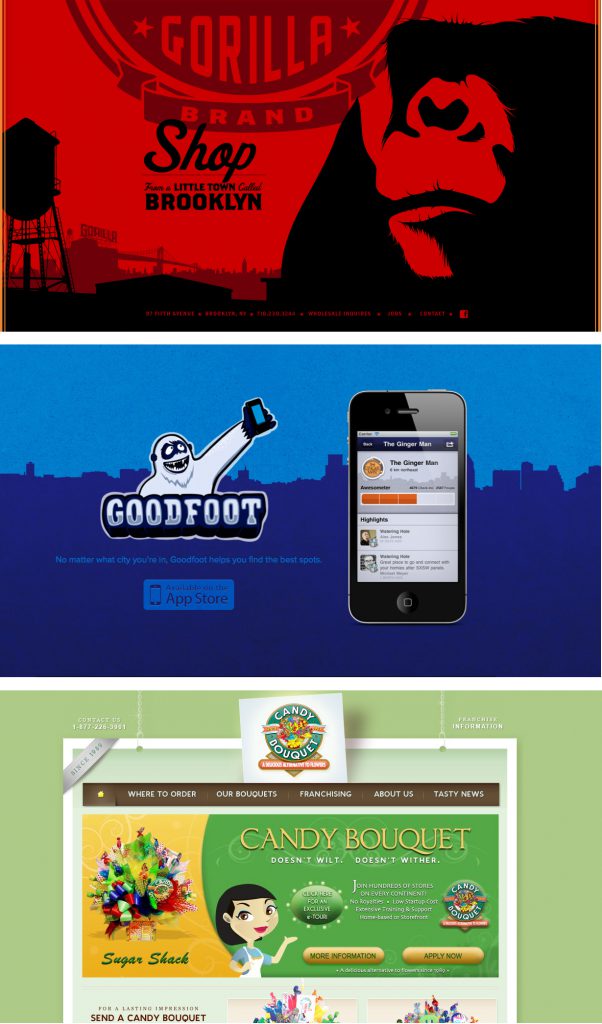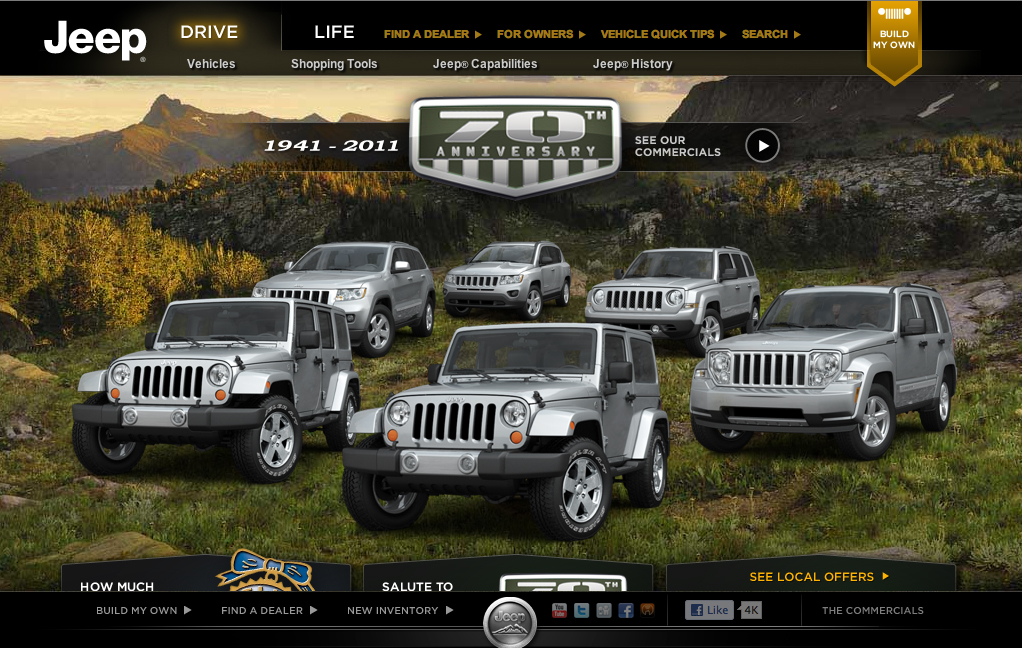Blog
Emotional Design Model – Designing Enjoyable Interactions
The vast range of design styles should be an indicator of just how different personal preferences can be. A style characterized by high gloss and polish may be loved by one group and hated by another. The design could be viscerally appealing and behaviorally enjoyable and still result in this outcome. Remember logic assigns meaning and emotion assigns value. For example, a group of executives might identify with a design, associating positive value to it. On the other hand, a group comprised of tradesmen might not relate to the same design in a positive way and in turn associate a negative value to it.
Only through empathy can you identify the different emotional characteristics of user groups. The more intimately you know the user the more self-evident their characteristics become. In an ideal world you would have the opportunity to live life in the users shoes, but this is unpractical. Thus the best approach is to use a framework for understanding what the users find emotionally pleasurable.
In his book Designing Pleasurable Products (CRC Press, 2002), author Patrick Jordan identifies two forms of pleasure, “needs driven” and “appreciation driven”. Needs driven pleasures are characterized by the removal of a preexisting discomfort. For example a hungry user could order food online, relieving his discomfort when it arrives. Appreciation driven pleasure is irrelevant to current comfort levels. A user who is already comfortable could be delighted at a beautiful photo, appreciating its composition. Therefor pleasure is derived through the elimination or absence of pain, or the increase of positive feelings.
Jordan further explains there are four distinct areas people receive pleasure. The areas are not specific to interaction design. Runners often talk about the “runners high,” an extremely pleasurable feeling achieved after an extended period of physical exertion, which is unrelated to design. However each of the areas can apply to design, especially on the web. A website used to track distances ran will be associated with the physical pleasure of the “runners high”.
Each area of pleasure is affected by all three levels of processing. Most importantly they give you identifiable applications you can use in your design. Jordan segments these areas into Physiological, Sociological, Psychological and Ideological.
Physiological Pleasure
Believe it or not, you probably already know a lot about psychological pleasure. Psychological pleasure is derived from cognitive ease and the sense of accomplishment. Usability emotionally impacts the user by preventing pain. Proficiency aims to eliminate existing pain.
If you fail to address usability and proficiency needs, the user will struggle with their task resulting in psychological frustration. Address those needs and the opposite will happen; users experience a sense of satisfaction in accomplishing a task effortlessly. Usability impacts the emotional appeal of the site; I’ve heard countless stories from users justifying their “love” for a site based on how easy it is to use.

A good example is Amazon’s “1 click” purchasing design. It allows repeat users purchasing items to bypass three or four pages of the checkout process by storing previously entered shipping and payment details in an online “profile”.
Gaming has demonstrated that psychological enjoyment can be gained through overcoming cognitive challenges. When a challenge is difficult, there is a stronger feeling of accomplishment in overcoming it. While I have yet to see it done well, a website that’s intentionally challenging could be gratifying for the user who sticks around to overcome it.
Get a Complete Digital Marketing Blueprint
How do top digital marketing agencies plan and execute successful campaigns? Our digital marketing blueprint canvas will help guide, communicate, and ensure the success of any digital marketing campaign you run.
A relevant dimension of psycho-pleasure is the user’s state of arousal. We have previously identified that increased arousal leads to behavioral motivation. This happens on a psychological level and in the right instances can be pleasurable. Excitement, anticipation, and relaxation are all arousal states considered enjoyable.
Arousal has physical ramifications as well. When excited your pulse increases, you perspire, and respiration is shallow and more frequent. When relaxed your pulse slows and breathing is deeper.

Reflective interpretation aside, colors can alter your arousal state on a visceral level. Blue is often associated with calming feelings and a sense of safety. This is likely due to the life dependency on water and increased survival while being near a fresh source. Pastels are perceived as calm and relaxing, which is why they are so frequently used in stressful environments like airplanes and dental offices. Red on the other hand is often associated with warning and danger. As the color of both blood and danger markings on wild animals, this isn’t surprising. Large bodies of red have the potential of increasing the arousal of users, which is why it can be seen as an exciting color.
Ideological Pleasure
Ideological pleasures come from values, morals, aspirations, and self-identity. Where the previous areas of pleasure were a mix of the different forms of emotional processing, ideological pleasure is purely reflective. One could argue that values could be formed based on behavioral signals, but the actual enjoyment only occurs via reflection.
Cognitive dissonance is a form of discomfort caused by holding conflicting ideas simultaneously. This leads to a tendency for people to act consistently based on their self-identity. As your sense of self is derived from your values and morals, you are drawn to sites that share your feelings. For example, if you are an advocate of open source software, websites that promote the fact they run on an open source platform strengthens your connection to them.
Values and morals are deeply ingrained in our sense of self-identification, making them powerful sources for emotional reactions. The passion that people exhibit when discussing religion or politics is a prime example of this. As there is a strong desire to act consistent with your values, there is a natural draw to anything that shares them with you. Those who are environmentally conscious will get enjoyment out of working with a company that promotes itself as being “Green”.
Aspirations and self-identity play a large role in an individual’s chosen lifestyle. Designs that speak to this lifestyle, or a site that relates to a lifestyle someone aspires to, will result in ideological pleasure. The Jeep website clearly communicates camping, outdoors, and adventure. While it is unlikely every Jeep owner will actually use the vehicle in off-road situations, the design speaks to an adventurous lifestyle many wish they had.

Using websites requires the use of technology, but not all people consider themselves “technologically savvy”. In fact some see it as a necessary evil, a source of frustration that has benefits that barely outweigh the negatives. On the other hand, people who strongly identify themselves as “tech people”, are inclined toward — and eagerly interact with — anything they perceive to be new and exciting technology.
Knowing in advance which of the above two groups the “target user” falls in allows you to create a design catering to their identity. Designing for a tech savvy user would mean accentuating the feeling of technology, potentially through three-dimensional buttons, digital looking displays, and other aspects of futuristic interfaces. If the users were technology adverse, you would instead want to design an interface that is devoid of technology visuals, mimicking analog real world situations. The use of paper, nature, and other similar elements lets the users be consistent in their desire to interact with real objects.
Emotion Influences Everything
The more empathy you have for your target user the stronger your design will be. With this empathy in hand, you could even design unintentionally and evoke positive emotions. I always advocate being intentional in your decisions, using the tools like the four pleasures framework to create desired responses.
As you design, think about each level of emotion. Consider which ones are relevant to the situation and how they can be used to elicit the right response. Emotion will influence behavior; use it to your advantage. Specifically, use emotion to persuade users toward fulfilling the site goals.
Emotion for emotion’s sake can create an exciting experience, but misses a valuable opportunity. With every decision you make, not only consider how it will affect the user emotionally but what it might potentially influence them to do. Will they want to tell their friends? Learn more? Click on a link? Consider the impact; if it doesn’t fit within the site goals you need to make some design changes.
Patrick Jordan’s four pleasure framework is a great starting point for designing enjoyable experiences. Clearly not all forms of pleasure fit into the four groups outlined, so feel free to deviate as needed. Always keep in mind there are situations where negative emotions are useful. Alarms are intentionally disruptive; so are error messages. The unpleasant nature of these elements motivates users to correct their cause.
This is really just the beginning of emotional design. The benefits of emotional design are obvious. Knowing how users experience emotion and pleasure can inform your design decisions but they are still theoretical. In the next chapter you will learn the practice of emotional design, which is where the fun really starts.
FREE RESOURCE
Get a Complete Digital Marketing Blueprint
How do top digital marketing agencies plan and execute successful campaigns? Our digital marketing blueprint canvas will help guide, communicate, and ensure the success of any digital marketing campaign you run.